Yinchuan, as the capital of Ningxia and a cultural gateway to China’s northwest, offers a captivating blend of desert landscapes, Islamic heritage, and frontier history. Whether you’re drawn to ancient Western Xia ruins or intrigued by the diverse Hui Muslim culture, Yinchuan promises a unique travel experience. From the solemn beauty of the Western Xia Tombs to the lively night markets in the Old Town, from the serene Helan Mountains to the shimmering waters of Sand Lake, Yinchuan invites exploration beyond the typical tourist path.

Yinchuan’s attractions are rich with history, nature, and culture. Highlights include the mysterious Western Xia Imperial Tombs, the scenic Sand Lake, and the rock paintings of Helan Mountain. Whether you’re interested in ancient civilizations, desert adventures, or cultural immersion, Yinchuan offers something truly special.
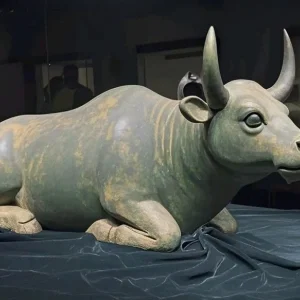
Ningxia Museum is the largest museum in the region, showcasing local history and ethnic heritage. It holds over 40,000 cultural relics ranging from ancient artifacts to Hui minority items.
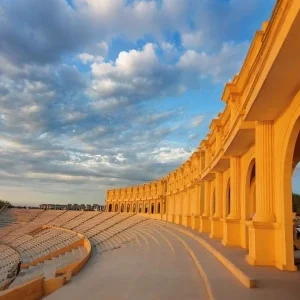
Lanshan Park is a scenic spot offering panoramic views of Yinchuan and surrounding landscapes. It features walking paths, temples, and seasonal flower displays popular among locals.
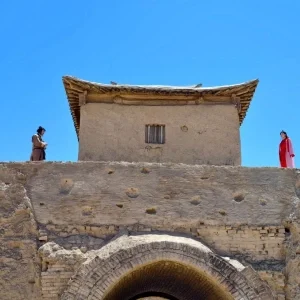
Zhenbei Western Film Studio is a massive movie set used for filming ancient Chinese dramas. Visitors can explore replica streets and enjoy live martial arts performances on-site.
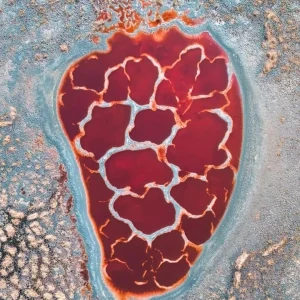
Wulan Lake is a peaceful natural lake surrounded by wetlands and grasslands near Yinchuan. It's a great spot for bird-watching, photography, and eco-tourism activities.
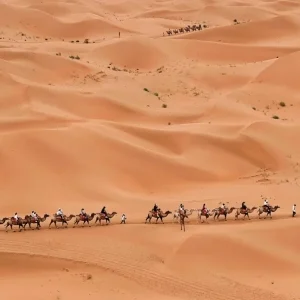
Shapotou combines desert scenery with the Yellow River and lush greenery in a single location. It offers camel rides, sand sliding, and spectacular views of shifting dunes.
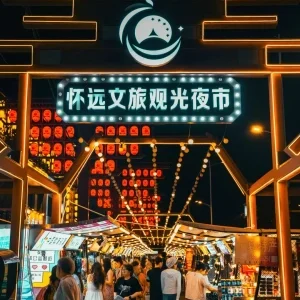
Huaiyuan Night Market is a vibrant hub for local snacks, Hui cuisine, and evening leisure. It comes alive after sunset with food stalls, souvenirs, and lively crowds.
Yinchuan’s public transport system is convenient and easy to navigate. The city has a reliable network of buses and ride-hailing services like Didi. Yinchuan Hedong International Airport connects the city to major destinations across China. Many top attractions can be accessed via public transport, but renting a car is a good option for exploring the outskirts like Helan Mountain or Shapotou.
Yinchuan is a paradise for those curious about northwest Chinese cuisine. Must-try dishes include hand-pulled lamb noodles, Hui-style beef soup, and roasted mutton skewers. Hui Muslim food dominates the scene, known for its halal ingredients and rich spices. Whether you’re dining at a local family-run restaurant or snacking at the bustling Nanxun Street Night Market, you’ll find delicious and distinctive flavors.
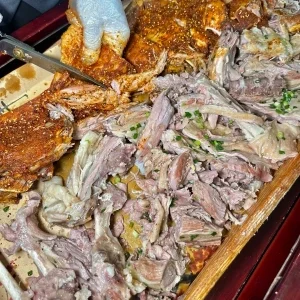
Hand-grabbed lamb is a traditional Hui-style dish where tender lamb is boiled and served whole. Diners eat it using their hands, enjoying its natural flavor with a pinch of salt or cumin.
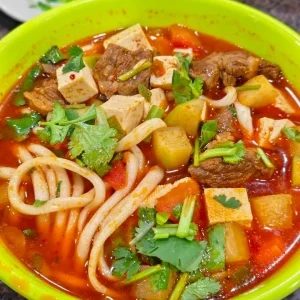
Lamb mince noodles feature spicy, savory minced lamb sauce poured over hand-pulled noodles. It’s a comforting and flavorful dish popular across Ningxia for its rich taste.
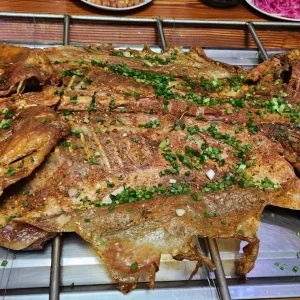
Roast whole lamb is a signature dish often served at festivals or banquets in Ningxia. The lamb is marinated with spices, slow-roasted, and carved tableside for sharing.

Lamb hotpot is a beloved winter dish where thin lamb slices are quickly boiled in broth. It’s served with dipping sauces and vegetables, perfect for communal dining.
Yinchuan offers a variety of accommodations to fit all budgets. High-end hotels are mostly found in the city center, while budget travelers can find comfort in clean and affordable guesthouses near major attractions. Staying near Zhongshan Park or the Old Town is convenient for sightseeing and food lovers.
With so many unique sites and experiences, it’s time to start planning your perfect Yinchuan trip. From discovering ancient tombs to trying desert sports and enjoying local Hui cuisine, your Yinchuan adventure will be unforgettable and filled with stories to tell.
Whether you’re visiting Yinchuan for the first time or returning for a deeper exploration, a few key travel tips can help. Spring (April to June) and autumn (September to October) offer the most pleasant weather. Sunscreen and water are musts if you plan to venture into the desert. Learn a few local customs of the Hui Muslim community to show respect while traveling.
Yinchuan covers an area of approximately 9,025 square kilometers and has a population of about 2.9 million. Here’s a breakdown by administrative division:
Note: These population figures are based on recent estimates and may vary slightly by year.
Yinchuan has a temperate continental climate characterized by dry air, strong winds, and four distinct seasons. Winters are long and cold; summers are hot but generally not humid. Sunshine is abundant throughout the year.
Here’s a month-by-month weather guide:
Best times to visit: Spring (April–May) and Fall (September–October).
Below are the postal and telephone area codes for Yinchuan’s main districts and counties:
Yinchuan once served as the capital of the Western Xia Dynasty, a mysterious kingdom ruled by the Tangut people from the 11th to 13th centuries. The legacy of this forgotten empire lives on in the hauntingly beautiful Western Xia Tombs and ancient ruins. Yinchuan later became a key point along the Silk Road, blending Han Chinese and Islamic influences, which continues to shape its identity today.
As the cultural heart of Ningxia, Yinchuan is known for its vibrant Hui Muslim culture. From mosque architecture and calligraphy to halal culinary traditions and religious festivals, the city offers a rich cultural tapestry. The Ningxia Museum and the China-Arab Expo Park are excellent places to learn more about Yinchuan’s role as a bridge between China and the Arab world.
Yinchuan hosts a variety of cultural and religious festivals throughout the year. Notably, the Islamic holiday of Eid is widely celebrated among the Hui population, bringing together food, prayer, and community spirit. The China-Arab States Expo also takes place in Yinchuan, showcasing economic and cultural exchange. For those interested in local life, the Lantern Festival and folk performances during Chinese New Year add a traditional flavor to the city’s festive calendar.
Q: What is the best time to visit Yinchuan?
A: The best times to visit Yinchuan are in the spring (April to June) and autumn (September to October), when the desert climate is mild and comfortable. Summers can be hot and dry, while winters are cold and windy.
Q: What transportation options are available in Yinchuan?
A: Yinchuan has buses, taxis, and ride-hailing apps like Didi. The city is also served by Yinchuan Hedong International Airport and a major train station. For visiting out-of-town sights, private car rental or guided tours are recommended.
Q: What are some of Yinchuan’s famous attractions?
A: Key attractions include the Western Xia Tombs, Helan Mountain rock carvings, Sand Lake, Chengtian Temple Pagoda, and the Yinchuan Old Town. Each location showcases a different side of Yinchuan’s nature, history, or culture.
Q: Can I use credit cards in Yinchuan?
A: Credit cards are accepted at large hotels and major restaurants, but many small vendors still prefer cash or mobile payment methods like Alipay or WeChat Pay. Carry some RMB in cash when shopping in markets.
Q: What are the food specialties in Yinchuan?
A: Don’t miss Hui specialties like lamb noodles, beef dumplings, roasted whole lamb, and dried dates. Street food options such as spicy skewers and sesame cakes are also worth trying at local night markets.
Explore detailed travel guides for China’s most popular cities, covering attractions, local food, accommodations, and transportation tips.

 English (US)
English (US)